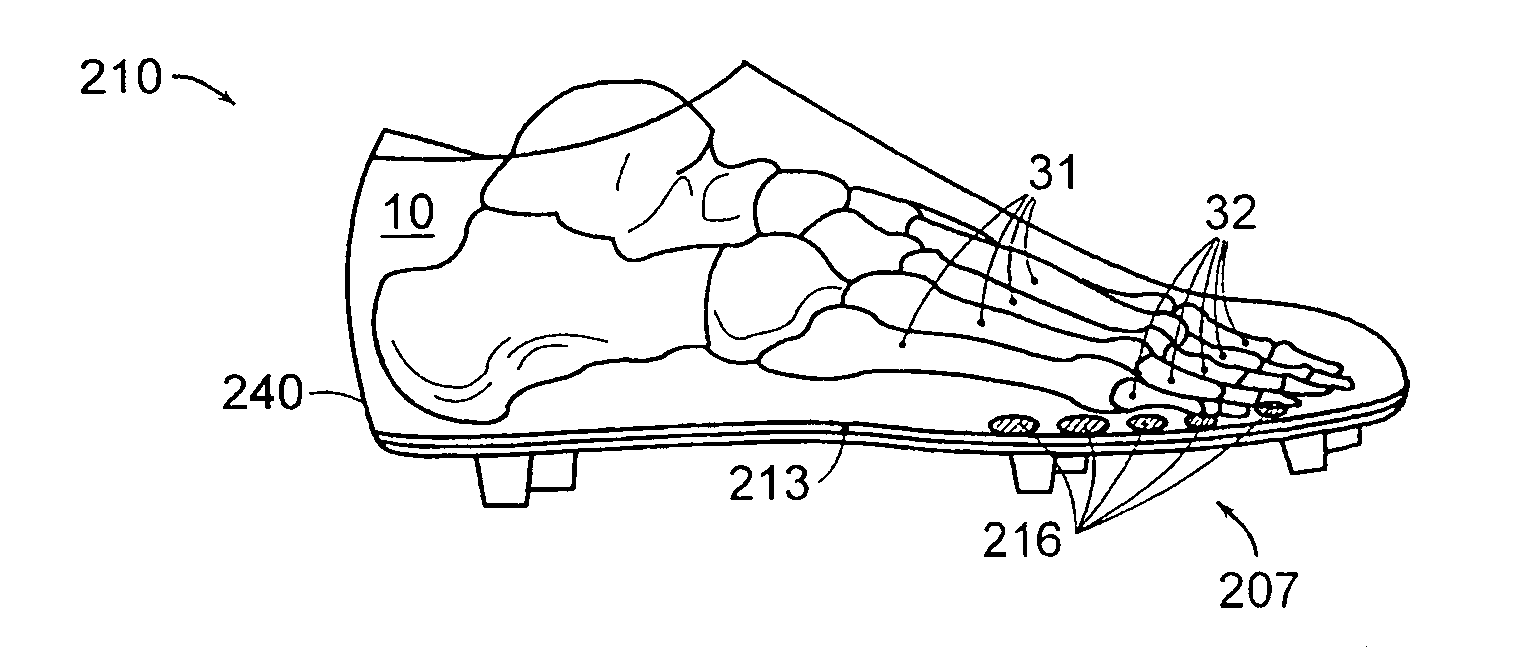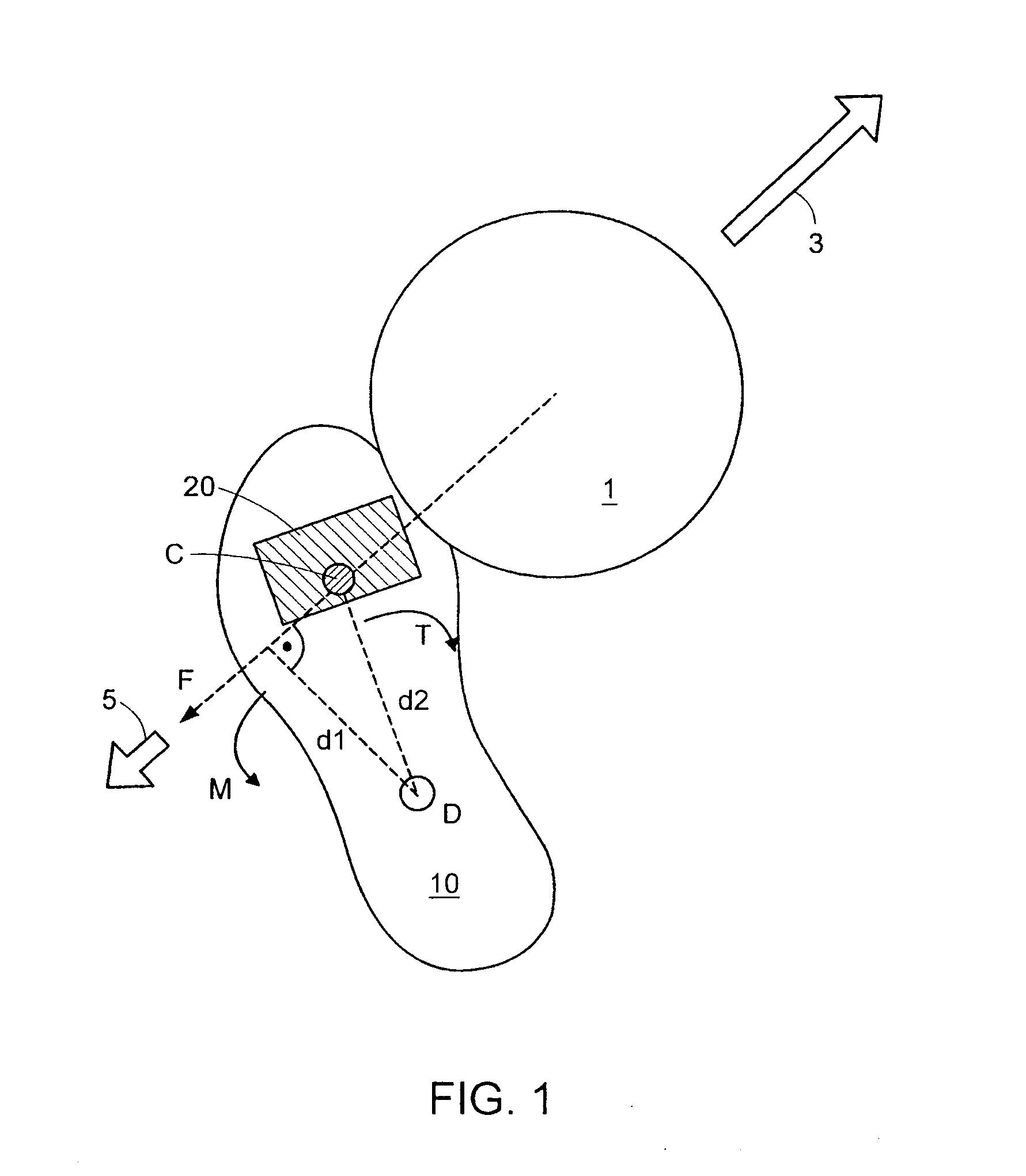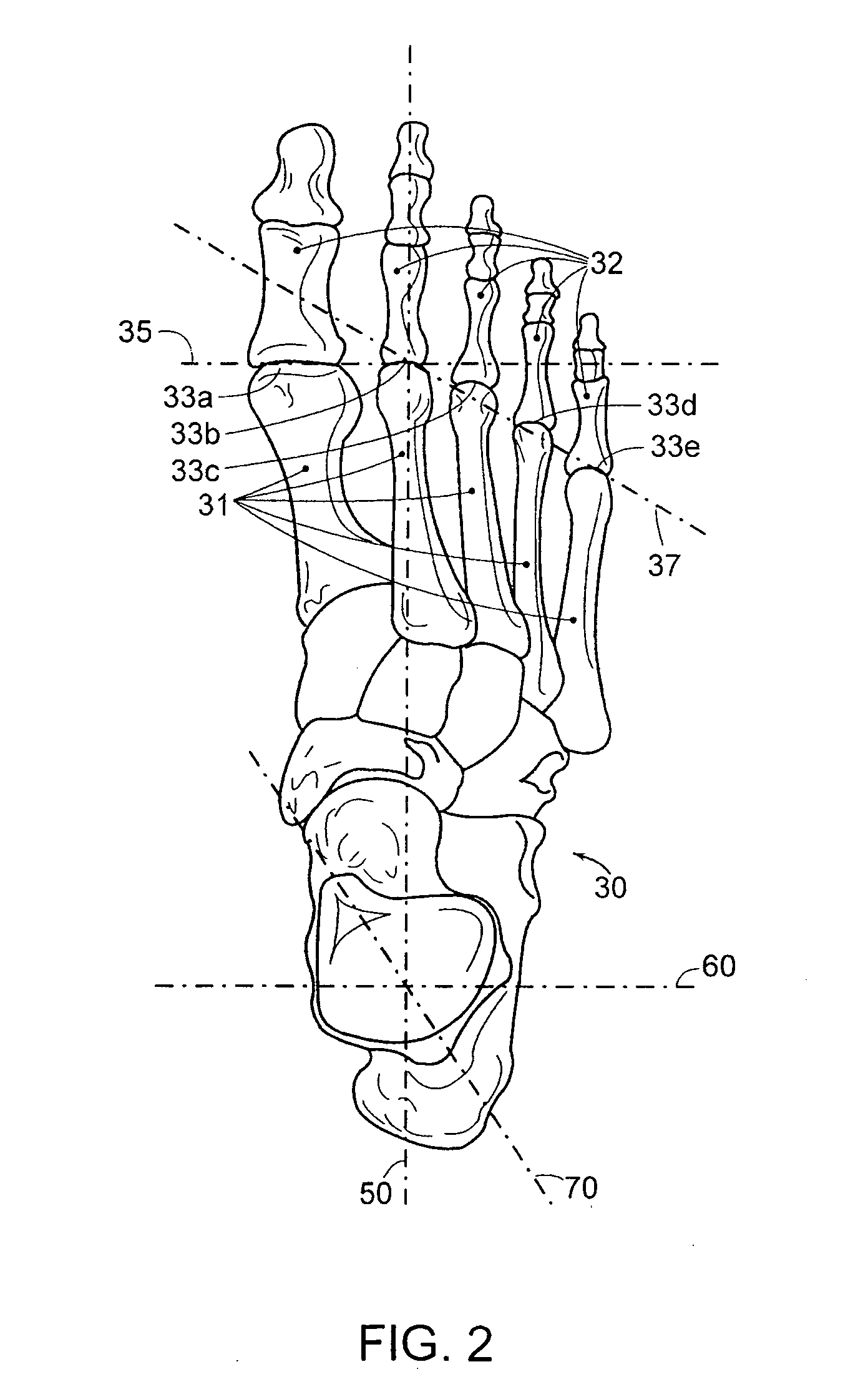Shoe with optimal mass distribution
a mass distribution and shoe technology, applied in the field of shoes, can solve the problems of not achieving the feel of the ball, the overall performance of the athlete, or the direct improvement of the shooting power of the player, etc., to achieve the effect of reducing the effort to maintain the foot in the desired position for a sharp shot, increasing shooting performance, and stabilizing the movement cours
- Summary
- Abstract
- Description
- Claims
- Application Information
AI Technical Summary
Benefits of technology
Problems solved by technology
Method used
Image
Examples
Embodiment Construction
[0025] Embodiments of the present invention are described below. It is, however, expressly noted that the present invention is not limited to these embodiments, but rather the intention is that modifications that are apparent to the person skilled in the art are also included. The terms “soccer shoe” or “shoe” are intended to designate in the following description every sports shoe that serves to move, for example, a ball or the like by the foot. Accordingly, the invention can also be used for sports where the ball is additionally played with the hands.
[0026]FIG. 1 depicts schematically the physical vector quantities acting between a shoe 10 and a ball 1. In the case of a shot in the direction of the large arrow 3, a force “F” is acting on the shoe 10 in accordance with Newton's law of action and reaction. The force F creates a torque “M”, the amount of which is determined by the product of the force F and the distance “d1” to the rotational axis “D” of the foot (approximately posi...
PUM
 Login to View More
Login to View More Abstract
Description
Claims
Application Information
 Login to View More
Login to View More - R&D
- Intellectual Property
- Life Sciences
- Materials
- Tech Scout
- Unparalleled Data Quality
- Higher Quality Content
- 60% Fewer Hallucinations
Browse by: Latest US Patents, China's latest patents, Technical Efficacy Thesaurus, Application Domain, Technology Topic, Popular Technical Reports.
© 2025 PatSnap. All rights reserved.Legal|Privacy policy|Modern Slavery Act Transparency Statement|Sitemap|About US| Contact US: help@patsnap.com



